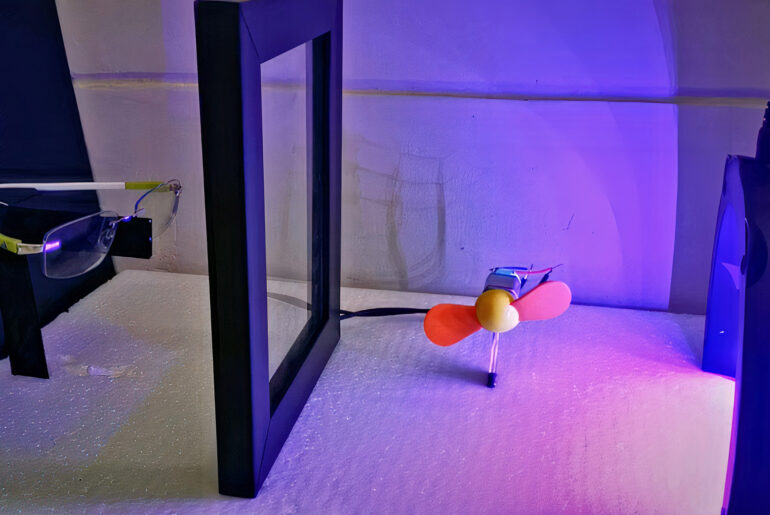
Carvey Ehren Maigue, an engineering student at Mapúa University in the Philippines, unveils AuREUS, an innovative system that uses the natural scientific principles behind the northern lights to convert rotting fruit and vegetables into renewable energy. Technically speaking, luminescent particles from certain fruits and vegetables can be suspended in a resin substrate, which when hit by UV light, absorb these particles and re emit visible light along the edges due to internal reflectance. Photovoltaic cells are placed along the edges to capture the visible light emitted, which is then converted to DC electricity.
Where can this be used in everyday life? Well, skyscrapers in urban settings for one, as this would allow access to clean renewable electricity. Compared to commercial grade windows, AuREUS absorbs UV light instead of just reflecting it away from the building, thus protecting people both indoors and outdoors. Best of all, AuREUS took home the James Dyson Award in the sustainability category this year.
- 𝗙𝘂𝘁𝘂𝗿𝗶𝘀𝘁𝗶𝗰 𝗖𝘆𝗯𝗲𝗿𝗽𝘂𝗻𝗸 𝗗𝗲𝘀𝗶𝗴𝗻: This beverage refrigerator can turn any space...
- 𝗦𝗽𝗮𝗰𝗶𝗼𝘂𝘀 𝗮𝗻𝗱 𝗣𝗿𝗮𝗰𝘁𝗶𝗰𝗮𝗹: Designed to store all your favorite beverages,this 3.2 Cu. Ft....
- 𝗜𝗻𝘁𝗲𝗹𝗹𝗶𝗴𝗲𝗻𝘁 𝗧𝗲𝗺𝗽𝗲𝗿𝗮𝘁𝘂𝗿𝗲 𝗥𝗲𝗴𝘂𝗹𝗮𝘁𝗶𝗼𝗻: This beverage...
Additional research will be done on extracting needed luminescent particles to allow 100% (from the current 80%) sourcing of dyes from fruits and vegetables instead of chemical ones. Currently, among the 5 colors used (Red, Orange, Yellow, Green, and Blue) a stable alternative to the blue dye has not been successfully made yet. Success in this area will bring sustainability to a full circle. Manufacturing: Currently AuREUS is standing at a 30 panel/mo. production. Additional funding can allow the creation of a team and facility that can increase current capacity Future: Advances in forming for chassis in solar powered transport,” said Maigue.





